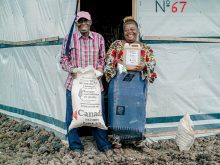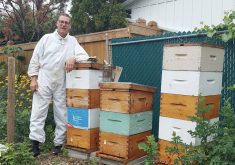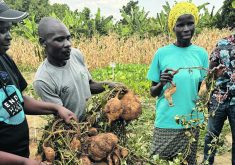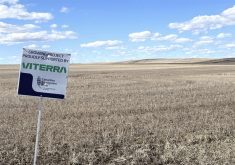Canadian farmers offered record-breaking financial support during the COVID-19 pandemic to the Canadian Foodgrains Bank, a Christian organization that provides help to needy and hungry people around the world.
According to Julie Derksen, supporter relations manager with the Canadian Foodgrains Bank, financial contributions to the CFB rose 33 percent between 2019 and 2021, jumping to a record $18.7 million in 2021, not including matching government contributions.
In 2019, pre-pandemic revenues were in the range of $14 million annually.
“During the pandemic, our supporters have responded with incredible generosity,” Derksen said. “There are a lot of places where need is rising in the world — where hunger is rising — and our supporters have really stepped up.”
Read Also

StatCan stands by its model-based crop forecast
Statistics Canada’s model-based production estimates are under scrutiny, but agency says it is confident in the results.
The Canadian Foodgrains Bank is a coalition of 15 church or church-based development agencies that work at providing international food aid.
Funds raised by the CFB leverage additional government support.
Contributions come in various forms but among the most common fundraising models are the community growing projects, where farmers or community groups join forces to grow crops that are sold into commercial markets.
The income from crop sales is donated to the Canadian Foodgrains Bank.
Derksen said CFB supporters harvested crops from more than 200 growing projects across Canada last year.
Growing projects, which generate about 50 percent of the coalition’s overall revenues in a typical year, can take many forms, she added.
Some projects depend on donated land and some depend on rented land.
In general, however, the projects benefit from donated labour, donated use of privately owned machinery and in many cases, donated crop inputs.
“We’re super fortunate that we have a really engaged group of rural and farm supporters,” Derksen said.
Financial contributions generated through growing projects have grown in recent years, despite obvious challenges presented by the COVID-19 pandemic, rising input costs and rising demand across Canada for productive farmland.
The number of growing projects that make donations to CFB each year has remained stable.
However, as the value of Canadian farmland increases, some growing projects are finding it difficult to retain existing acres or secure new acres for charitable purposes.
“Some projects are increasingly struggling to find land, and that’s across the country, just because it’s obviously so valuable,” Derksen said.
“Just as it’s getting harder for farmers to find land, it’s getting harder for growing projects to find land as well.”
Derksen said some growing projects were impacted by drought and challenging growing conditions in 2021.
But higher commodity prices helped to buoy overall revenues.
“Higher commodity prices have helped,” she said.
“Even though there were some weather challenges (last year), commodity prices were good so some of growing projects that relied on the sale of crops did very well.”
Derksen said other significant sources of revenue at the Canadian Foodgrains Bank include emergency appeals, fundraisers and donations of physical or financial assets from supporters across the country.
For more information on the organization, or for details on how to donate, email cfgb@foodgrainsbank.ca or call 204-944-1993. Visit https://foodgrainsbank.ca/ for more information on the organization and its work around the world.


















